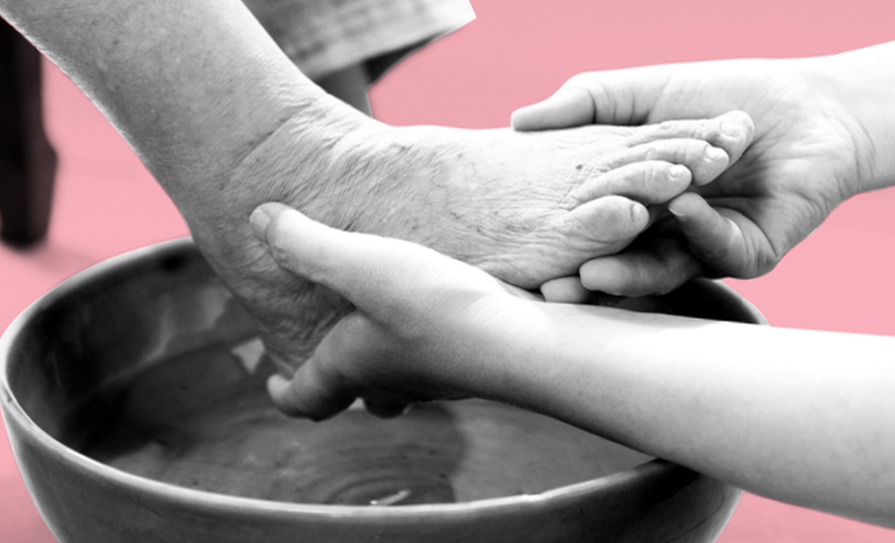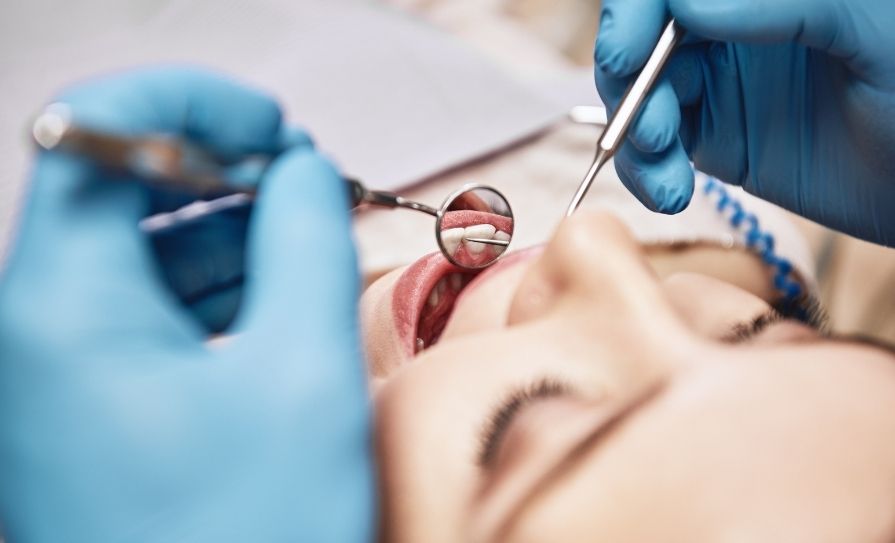Eamonn Brady examines all of the issues surrounding foot care in the older person
Feet consist of skin, bones, muscles, tendons, ligaments, nerves, and blood vessels. Our feet are one of the most important organs of our body. Put simply, our feet allow us to get around and are constantly in use. They allow us to balance our body effectively in walking, running, working, dancing, and in many other daily activities. Our feet are vulnerable to repetitive mechanical stress and skin irritations due to daily usage. Foot problems get more common as we get older as years of use start to take their toll and medical problems such as diabetes, arthritis, and poor circulation can cause foot problems.
Common foot problems in the older person
These include dry and hard skin, corns, callouses, blisters due to friction, ingrown toenails, foot deformity (from birth or due to conditions like arthritis), fungal infection such as athlete’s foot and fungal nail infection, circulation problems, and verrucas. These problems are usually caused by inappropriate or inadequate foot care, mechanical causes (often due to inappropriate footwear), infection and underlying medical conditions, eg, diabetic neuropathy, congenital foot deformity (foot deformity you are born with) such as flat feet, etc. Many of these foot problems can be prevented through proper daily care.
Top 10 foot problems in older people
Arthritis
Arthritis is a common foot problem among older people, affecting joints and causing pain, swelling, and stiffness. Osteoarthritis, the most prevalent form, results from the gradual breakdown of cartilage, leading to discomfort and reduced joint flexibility. Rheumatoid arthritis, an autoimmune disorder, can also affect the feet.
Bunions
Bunions are deformities of the big toe joint, often causing a bony protrusion. Older individuals may develop bunions due to genetics, arthritis, or wearing ill-fitting shoes. Symptoms include pain, redness, and difficulty finding comfortable footwear.
Plantar fasciitis
Plantar fasciitis is the inflammation of the tissue connecting the heel bone to the toes. Older individuals may experience sharp heel pain, especially in the morning or after prolonged periods of inactivity. Factors like obesity, high-impact activities, and inadequate footwear contribute to its development.
Corns and calluses
Corns and calluses are thickened areas of skin that develop in response to friction or pressure. Older people, particularly those with foot deformities or improper footwear, may be prone to these conditions. While generally not serious, they can cause discomfort and pain.
Peripheral neuropathy
Peripheral neuropathy is a condition involving nerve damage, often associated with diabetes. Older individuals with diabetes may experience tingling, numbness, or pain in the feet. Proper management of blood sugar levels is crucial in preventing and managing peripheral neuropathy.
Ingrown toenails
Ingrown toenails occur when the edge of the toenail grows into the surrounding skin, causing pain and potential infection. Older individuals, especially those with poor nail-trimming habits or underlying health conditions, may be more susceptible.
Circulatory issues
Ageing can affect blood circulation, leading to conditions like peripheral artery disease (PAD). Reduced blood flow to the feet can result in pain, cramping, and slower healing of wounds. Smoking, diabetes, and hypertension can exacerbate circulatory problems.
Hammertoes
Hammertoes involve abnormal bending of the toe joints, creating a hammer-like appearance. Older individuals may develop hammertoes due to muscle imbalance, arthritis, or wearing tight shoes. This condition can cause pain, corns, and calluses.
Fungal infections
Fungal infections, such as athlete’s foot and toenail fungus, are more common in older individuals due to factors like decreased immunity and slower nail growth. These infections can cause itching, redness, and nail discoloration.
Gout
Gout is a type of arthritis characterised by the buildup of uric acid crystals in the joints. The big toe is a common site for gout attacks, causing sudden and severe pain. Older individuals with a history of gout may experience recurrent episodes.
Corns and calluses are thickened areas of skin that develop in response to friction or pressure. Older people, particularly those with foot deformities or improper footwear, may be prone to
these conditions
Prevention of general foot conditions
Daily care tips
- Clean both feet thoroughly with warm water;
- Dry both feet especially between the toes (to prevent infection between toes);
- Moisturise feet daily (except between toes which can lead to fungal infection);
- Trim toenails straight across. Do not cut too close to the nail bed;
- Smooth sharp corner or edges of nails by using a nail file;
- Protect feet by wearing shoes whenever you go outdoors;
- Do not apply treatments or drugs onto feet without appropriate advice, eg, from a doctor or pharmacist. Many foot treatments such as corn removal pads contain acid such as salicylic acid, which can burn the skin, so must be avoided in diabetics and older people with poor circulation, sensitive skin etc.
Daily inspection
- Inspect the feet on skin colour, dryness, swelling, or tenderness;
- Look out for blisters, cracks, sores, ulcers, corns, and any ingrown toenails;
- Any unusual sensation such as tingling, lack of feeling, or pain;
- If there is joint pain or deformity, prompt treatment is important.
Selection of shoes and socks
Socks
- Use cotton socks as they can absorb sweat;
- Change socks daily.
Shoes
Tips for making sure your shoes fit:
- Shoe size may change as you age, so always have feet measured before buying shoes. The best time to measure feet is at the end of the day when feet are largest;
- Most of us have one foot that is larger than the other; fit your shoe to your larger foot;
- Don’t buy shoes by the size without trying them on first. The size marked inside the shoe may not fit you;
- Walk in the shoes to make sure they feel right;
- Choose a shoe that is shaped like your foot. Styles like high heels or pointed toes can hurt feet;
- Stand up when trying on shoes to make sure there is about a half-inch between your toe and the end of the shoe;
- Make sure the ball of your foot fits comfortably into the widest part of the shoe;
- Don’t buy shoes that feel too tight and hope that they will stretch;
- The heel of the shoe should not slide up and down on your heel when you walk;
- The upper part of the shoes should be made of a soft, bendable material to match the shape of your foot;
- Soles should give solid footing and not slip. Thick soles cushion your feet when walking on hard surfaces;
- Low-heeled shoes are more comfortable, safer, and less damaging than high heels.
Be more active
Walking, dancing, swimming, and cycling are good and easy on the feet. Avoid hard-on-the-feet activities like running and jumping. Do a short warm-up and cool down before and after exercise.
Regular moisturising is essential
Keeping feet clean and moisturised daily is vital to treat and prevent the problem of dry, hard, and cracked skin on the feet and heels. Moisturising can give relief from hard and cracked heels, itchy feet (excluding athlete’s foot), dry flaking skin, peeling skin on feet, burning sensation on the feet, and tired feet.
Given the multifactorial nature of diabetic foot problems, a collaborative approach is essential. Chiropodists, vascular specialists, and other healthcare professionals work in tandem to address different aspects of foot health
Diabetic foot problems
Type 2 diabetes is more common the older we get; diabetic foot problems pose significant challenges for both patients and healthcare providers, demanding a comprehensive understanding and proactive approach to mitigate complications. For doctor and nurses specialising in diabetic care, a big
part of the role revolves around the intricate interplay between diabetes
and foot health, emphasising prevention, early detection, and multifaceted management strategies.
Diabetes, characterised by elevated blood glucose levels, can lead to a spectrum of complications, with the feet being particularly vulnerable. Prolonged exposure to high glucose levels can impair blood vessels and nerves, a condition known as peripheral neuropathy. The diminished sensation in the feet, coupled with compromised blood flow, makes individuals with diabetes prone to injuries and infections that often go unnoticed.
One of the primary challenges in diabetic foot care is preventing ulcers, as even minor injuries can escalate into serious wounds.
Regular foot examinations, coupled with patient education on proper foot care, are important. Patients should inspect their feet daily, addressing any abnormalities promptly, and adopt appropriate footwear to minimise friction and pressure.
Early detection of complications is pivotal, and this is where routine clinical assessments become crucial. Regular check-ups to assess sensory perception, vascular health, and skin integrity is important. Identifying warning signs such as changes in skin colour, temperature, or the presence of calluses enables timely intervention and reduces the risk of complications.
Given the multifactorial nature of diabetic foot problems, a collaborative approach is essential. Chiropodists, vascular specialists, and other healthcare professionals work in tandem to address different aspects of foot health. Patient engagement is essential: Open communication to understand their lifestyle, challenges, and concerns enables a tailored and effective care plan.
Foot ulcers, a common complication, require a meticulous approach to wound care. Debridement, infection control, and offloading pressure from the affected area are fundamental components of managing diabetic foot ulcers. Advanced wound care techniques, including growth factors and skin substitutes, may be employed to facilitate healing.
PAD, prevalent in diabetic individuals, necessitates focused interventions to improve blood flow. Lifestyle modifications, medication management, and in some cases, revascularisation procedures may be considered. Collaborative efforts among specialists ensure a comprehensive approach to managing both neuropathy and vascular issues.
Patient education remains a cornerstone in diabetic foot care. Empowering individuals with knowledge about their condition, emphasising the importance of glycemic control, and promoting lifestyle modifications contribute significantly to preventing complications.
Diabetic ulcers
Diabetic foot ulcers (DFUs) pose a significant health risk as they can lead to severe complications, including infections and amputations.
As mentioned earlier, a crucial aspect of diabetic foot problems, which includes DFUs, is maintaining optimal glycemic control.
Wound care is a fundamental component of DFU treatment. Cleaning the ulcer, removing dead tissue (debridement), and applying dressings are essential steps in promoting healing and preventing infection. Advanced wound care techniques, including growth factors, bioengineered tissues, and negative pressure wound therapy, may be employed to accelerate the healing process.
Offloading pressure from the affected foot is critical to reduce stress on the ulcer and promote healing. This may involve the use of specialised footwear, braces, or crutches to relieve pressure on the affected area. Offloading redistributes weight and minimises further trauma to the ulcerated tissue.
In some cases, surgical intervention may be necessary. Procedures such as skin grafts, flap reconstruction, or even amputation may be considered if conservative measures prove ineffective. Early detection and intervention play a pivotal role in preventing the progression of DFUs to more severe stages that may require surgical solutions.
Chiropodist A chiropodist assesses, diagnoses, and treats diseases and abnormalities of the feet and lower limbs. A chiropodist can significantly improve a person’s quality of life by alleviating painful symptoms and promoting and maintaining mobility.
Disclaimer: Brands mentioned in this article are meant as examples only and not meant as preference to other brands.
Author: Eamonn Brady MPSI (Pharmacist). Whelehans Pharmacies, 38 Pearse St and Clonmore, Mullingar. Tel 04493 34591 (Pearse St) or 04493 10266 (Clonmore). www.whelehans.ie.
Eamonn specialises in the supply of medicines and training needs of nursing homes throughout Ireland. Email ebrady@whelehans.ie







